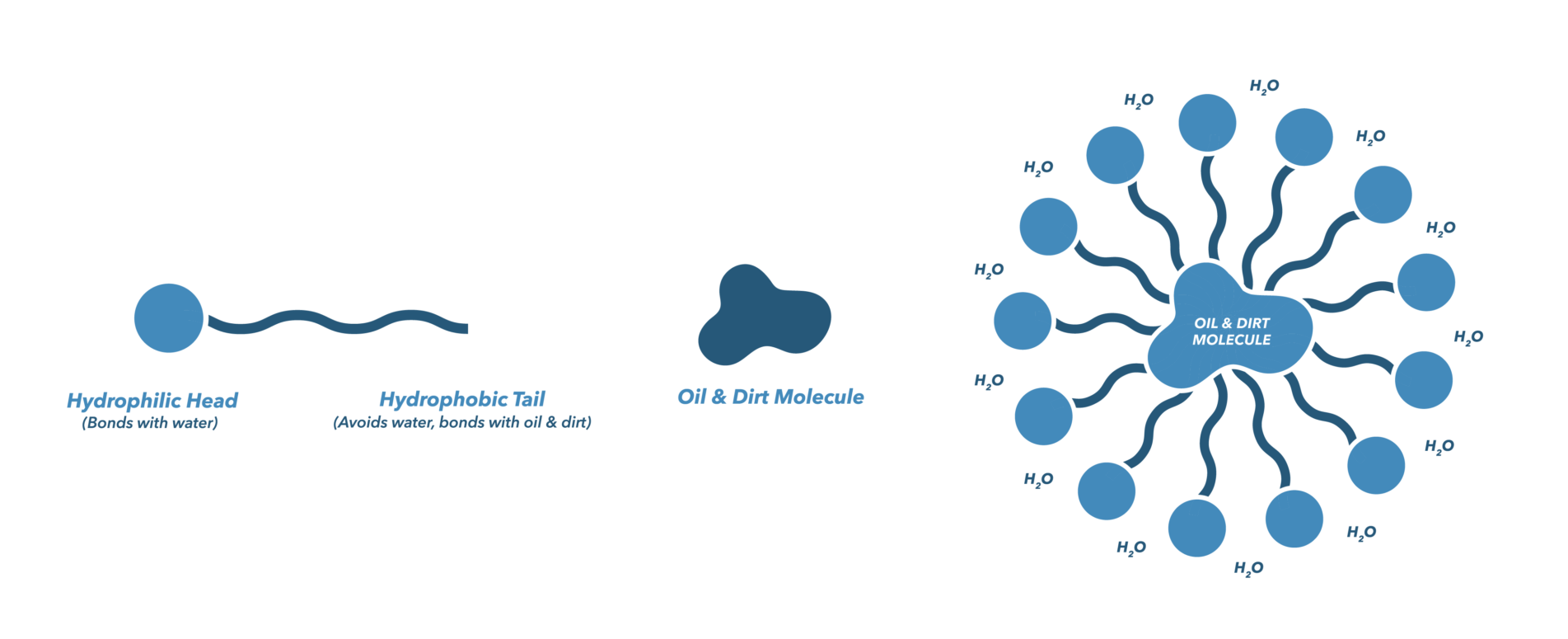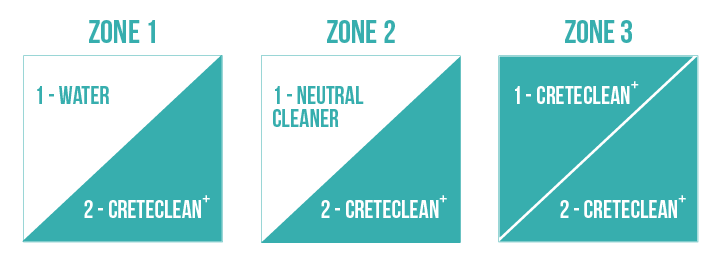Not All Cleaners Are Created Equal
Not all floor cleaners are created equal, and this is especially true for concrete cleaners. Selecting a concrete cleaner specifically designed to complement and work with concrete floors is essential to keeping your floors in excellent working condition and looking amazing!
.
3 Concrete Cleaning Myths
When it comes to concrete cleaning, there are three myths that are as harmful to your floor as dirt and debris.
- MYTH 1: Concrete Floors are Maintenance Free
Concrete floors are durable, yes, but they are not immune to wearing. They require regular maintenance with the right cleaner. Using the wrong cleaner can literally attack and dull the desired appearance of your concrete floor. Concrete floors are not maintenance-free. Instead, they are low-maintenance.
- MYTH 2: Cleaning with Water is Good Enough
Using water only to clean concrete does little more than spread the contaminants around. The majority of the dirt, soil, grease and grime remain on the floor to continue degrading it.
- MYTH 3: Neutral pH Cleaners are Safe for Cleaning Concrete
Simply because a cleaner has a neutral pH does not mean it is necessarily safe for your floor. Many contain citric, caustic or acidic components that will do your floor more harm than good. An overly acidic or basic cleaner will etch concrete. So what is the proper pH level for a cleaner? It is in the 9-10 range, which is similar to cured/aged concrete.
- MYTH 1: Concrete Floors are Maintenance Free
Is Your Cleaner Safe for Concrete?
Your cleaner may be unsafe if it:
- Contains acids, hydroxides or sulfates
Concrete is sensitive to acid which can lead to etching and staining. Sulfides and hydroxides will eventually soften concrete.
- Has a pH level ABOVE or BELOW 9-10
A safe concrete cleaner is not neutral (7), but rather similar to the pH of cured/aged concrete (9-10). An overly acidic or basic cleaner can etch concrete.
- Contains acids, hydroxides or sulfates
Polar Micelle Technology
CreteClean Plus with Scar Guard™ utilizes Polar Micelle Technology. Soap molecules penetrate the floor surface and emulsify oil and dirt into smaller particles. The soap molecules then completely surround the oil or dirt molecule, creating a micelle. The micelle attaches itself to water molecules and is held in suspension, then carried away in the rinse water.

Comparison: CreteClean Plus vs. Water, Neutral Cleaner
At first thought, dirt is just dirt. And dirt on a floor is just dirty. But on a concrete floor, it is so much more than that. Dirt is one of the main contributing factors to a dull concrete floor. The soil and grit tracked in from the outside act as an abrasive medium, similar to that of 200-grit sandpaper, which scratches and effectively deteriorates the attractive sheen on your concrete floor.
Test Parameters: One continuous piece of polished concrete (which received little to no traffic and received periodic cleaning) divided into three zones. Cleaned using a brand new auto scrubber. Each zone cleaned twice with the proper amount of drying time in between. After each cleaning, the auto scrubber waste water was collected and bottled. The auto scrubber tank, pads, filter, etc. were thoroughly cleaned each time before switching to the next cleaning agent.
Test Results: Notice the significant amount of dirt collected when cleaned with CreteClean Plus – especially on the second cleaning after water and a neutral cleaner had already been used. In Zone 3, CreteClean Plus picked up almost all of the dirt and soil on the first cleaning, leaving barely any dirt and soil to be cleaned up on the second cleaning.


